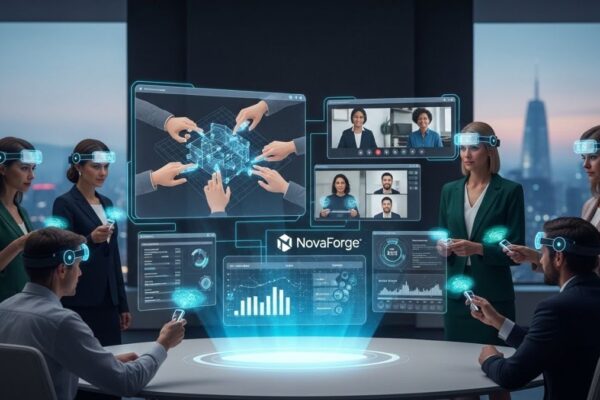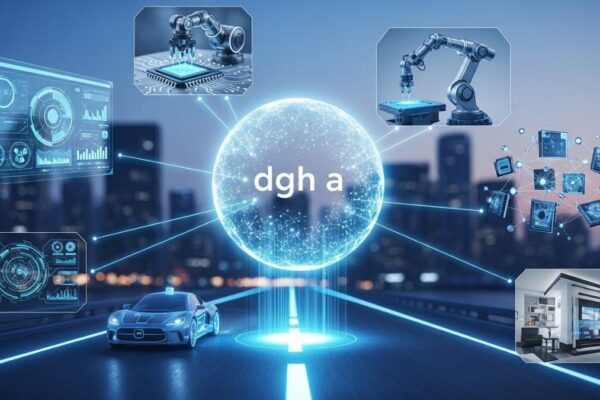Exploring newtopy: The Next Frontier in Digital Innovation

Welcome to the dawn of a new era in digital innovation: Newtopy. This groundbreaking concept merges the realms of neuroscience and technology, promising to reshape how we interact with the digital world. Imagine a future where your thoughts can translate seamlessly into actions on your devices or insights from brain activity illuminate user experience design. The potential impact of Newtopy is immense, offering exciting possibilities for industries ranging from healthcare to education and beyond. As we stand at this intriguing crossroads, let’s dive deeper into what Newtopy entails and uncover its implications for our lives.
The History and Evolution of Technology
The journey of technology is a fascinating tale. It began with simple tools crafted from stone and wood. Early humans harnessed fire, which marked the first step toward innovation.
As civilizations grew, so did their technological ambitions. The invention of the wheel transformed transportation and trade, setting new standards for progress.
Fast forward to the Industrial Revolution; machinery took center stage. Factories sprang up, changing labor dynamics forever. This era birthed inventions that reshaped society.
The 20th century saw leaps in communication and computing power. From radios to computers, each advancement brought people closer together.
Today we stand on the brink of another revolution—digital innovation intertwined with neuroscience through concepts like newtopy. This convergence promises to redefine our interaction with technology as we know it.
Understanding Newtopy: A Combination of Neuroscience and Technology
Newtopy represents a groundbreaking fusion of neuroscience and technology. This innovative concept leverages insights from brain science to enhance digital experiences.
Imagine devices that adapt not just to user inputs, but also to the emotional and cognitive states of users. Newtopy pushes boundaries in how we interact with machines. It seeks to create interfaces that respond intuitively, much like human conversation.
At its core, newtopy aims for deeper engagement. By analyzing neural patterns, technologies can predict needs and preferences with remarkable accuracy.
This convergence raises exciting possibilities for fields such as education, healthcare, and entertainment. Each sector stands ready for transformation through enriched interactions driven by our understanding of the human mind.
The potential applications are vast and varied, sparking curiosity among technologists and neuroscientists alike who envision a future where empathy meets innovation seamlessly.
Advantages and Challenges of Implementing Newtopy
The implementation of newtopy offers exciting advantages. One significant benefit is enhanced cognitive performance. By integrating neuroscience with technology, newtopy can optimize how we learn and process information.
Increased productivity is another appealing aspect. Imagine tools that adjust to your mental state, helping you focus when distractions arise.
However, challenges are also present. The complexity of merging these fields requires substantial investment in research and development. Many organizations may struggle to keep pace with rapid advancements.
Privacy concerns loom large as well. With neural data being collected, individuals might feel uneasy about who controls this sensitive information.
Balancing innovation with ethical considerations remains crucial for a successful rollout of newtopy solutions across various industries.
Ethical Considerations Surrounding Newtopy
As newtopy emerges, ethical considerations take center stage. The interplay between neuroscience and technology raises questions about privacy and consent. How much of our cognitive processes should we share with machines?
The potential for manipulation is another concern. With the ability to influence thought patterns or behavior, there’s a fine line between enhancement and coercion. Who controls this powerful tool?
Moreover, accessibility plays a crucial role in its ethical landscape. Will newtopy widen the gap between those who can afford these advancements and those who cannot? Ensuring equitable access becomes essential.
Data security also warrants attention. Protecting sensitive neurological information is vital as breaches could have severe implications on personal identity and autonomy.
There’s the matter of accountability when using newtopy applications in various sectors like healthcare or education. Establishing clear guidelines will be necessary to navigate these complex waters responsibly.
The Future of Newtopy: Predictions and Possibilities
The future of newtopy is brimming with possibilities that could reshape our digital interactions. Imagine a world where technology seamlessly integrates with the human brain, enhancing cognitive abilities and personalizing experiences.
Predictive algorithms might evolve to anticipate individual needs, creating hyper-personalized content. This could revolutionize industries ranging from education to healthcare. Learning systems tailored to an individual’s pace may become commonplace.
However, such advancements also raise questions about dependency on technology. Will we lose essential skills as machines enhance our capabilities? The balance between enhancement and autonomy will be crucial.
Collaborative environments powered by newtopy can foster creativity like never before. Teams equipped with real-time neural feedback might brainstorm innovative solutions at unprecedented speeds.
As research progresses, regulatory frameworks will need to keep pace. Ensuring ethical use while harnessing the potential benefits of newtopy remains a significant challenge for policymakers and technologists alike.
Conclusion:
The emergence of newtopy represents a significant shift in the landscape of digital innovation. As we delve deeper into its potential, it becomes clear that this fusion of neuroscience and technology could reshape how we interact with the world around us.
The historical context reveals an evolution driven by curiosity and necessity. Each technological leap has paved the way for more advanced developments, setting a rich foundation for newtopy to flourish. By understanding this trajectory, we can appreciate how far we’ve come—and where we might be headed.
As organizations explore the advantages offered by newtopy—enhanced decision-making, increased efficiency, and improved user experiences—they must also grapple with challenges such as implementation costs and technical complexities. Balancing these factors will be key to unlocking its full potential.
You may also like

Unpacking the Mystery of trinou: Trends and Insights


Leave a Reply